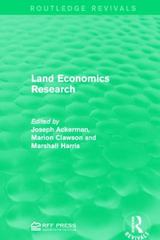Question
a. Let's start with some history: Low-income assistance programs in US began, in a broad scale, during the 1960s with the War on Poverty programs
a. Let's start with some history: Low-income assistance programs in US began, in a broad scale, during the 1960s with the "War on Poverty" programs and later the Family Assistance Plan, none of which provided income without some connected restriction (how much they worked, how the money was spent, family characteristics, etc. For example, Aid to Families with Dependent Children (AFDC), started in the 1960's, provided single-earner households a monthly cash assistance only if they had dependent children and fell below a certain income level. However, if an AFDC participant worked, then their monthly government cash assistance was reduced by $1 for every $1 earned. Below you are asked to use the labor-leisure model to explain the impacts of the program on work decisions.
First, start by drawing a labor-leisure graph to show the budget constraint (intercepts, slope) for a person that earns $10 wage per hour worked and has 300 hours per month available to allocate between leisure and work. Include an indifference curve showing the person maximizes utility working 100 hours (also, show leisure hours and income on graph).
Second, on the same graph, draw the budget constraint with an AFDC-type of assistance program, where the government guarantees the person $500 minimum monthly income (even if they do not work) but reduces the $500 assistance by $1 for every $1 the person earns at work (i.e., earn $10, assistance reduced to $490). The budget constraint is a little tricky: It may help to think about how much income a person has if they don't work at all, then their amount of earned income and government assistance if work one hour, two hours, etc.) How do you expect this government program to impact the person's work decisions? Work more, less, no effect? Explain using labor-leisure model/graph and relevant concepts.
b. Now show graphically the effect of the Stockton experimental basic-income program on your labor leisure graph, where $500 cash assistance is given with no restrictions. Explain you expect the work incentives under the Stockton program compare to the program in part a.
c. Use your graph to explain/show that participants in the Stockton program should be better off (higher level of well-being) with its "no strings attached" program compared to the AFDC-type program.
Step by Step Solution
There are 3 Steps involved in it
Step: 1

Get Instant Access to Expert-Tailored Solutions
See step-by-step solutions with expert insights and AI powered tools for academic success
Step: 2

Step: 3

Ace Your Homework with AI
Get the answers you need in no time with our AI-driven, step-by-step assistance
Get Started


